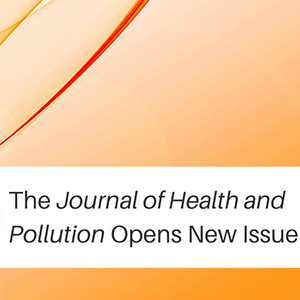Jill Escher, J.D, a research philanthropist and advocate for the autism community, visited NIEHS Sept. 24 to discuss a topic she says needs more attention — germline exposure to toxicants. The germline refers to both mature sperm and eggs, called gametes, and the earlier cells that produce them.
“When it comes to our gametes, which are a major part of our life cycle that can last decades before conception, those tend to get the short end of the stick [in toxicology research],” she said.
 “We should leave no stone unturned. And this is a big stone,” said Escher about investigating potential drivers of the increasing prevalence of autism. (Photo courtesy of Steve McCaw)
“We should leave no stone unturned. And this is a big stone,” said Escher about investigating potential drivers of the increasing prevalence of autism. (Photo courtesy of Steve McCaw)Escher told the audience that more studies should be conducted into how exposures can affect those cells and potentially cause health problems in offspring.
She was followed by grantee Victor Corces, Ph.D., of Emory University. He presented research into how germ cell exposure to bisphenol A (BPA), a chemical found in many plastics, can cause obesity in later generations. The NIEHS Office of the Director sponsored both talks.
Personal discovery, public advocacy
Escher said her interest in this research started after she learned she was exposed in utero to heavy doses of synthetic steroid hormones. They had been given to her mother to prevent miscarriage.
“So, discovering this when I was 45 years old, under most circumstances, would not have mattered,” she said. “But here’s the thing: I have three children, and two of them have … nonverbal autism.”
According to Escher, learning about that exposure made her wonder whether her eggs had been affected, leading to her children’s dysregulated brain development. It also inspired her to dig into the scientific literature, which she said did not adequately address her questions.
Studies scratch the surface
A study published last year in JAMA Pediatrics reported that grandchildren of women who used diethylstilbestrol (DES), a synthetic estrogen, during pregnancy had significantly increased odds of developing attention deficit hyperactivity disorder.
Escher also shared studies showing links between smoking while pregnant and increased risk for autism and asthma in grandchildren.
She then turned to general anesthesia. “This is one of the most toxic exposures that humans will ever encounter in their lives,” said Escher. She noted that a handful of animal studies have shown associations between anesthesia and impaired learning and behavioral development in offspring.
But such studies are rare, according to Escher, and the gap in research means there is a gap in what we know about how exposures affect the health of offspring.
“Should we test for heritable impacts of germline toxicant exposures?” asked Escher. “I’m here to say yes, we emphatically must do this.”
Grantee looks at BPA, obesity
Corces focused on his NIEHS-funded studies on the heritable effects of BPA exposure during pregnancy.
 Corces explained some of the complex molecular mechanisms that can cause germline exposure to BPA to increase obesity rates in later generations. (Photo courtesy of Steve McCaw)
Corces explained some of the complex molecular mechanisms that can cause germline exposure to BPA to increase obesity rates in later generations. (Photo courtesy of Steve McCaw)After exposing mice to extremely high concentrations of BPA, he found a 90% obesity rate in grandchildren and later generations. He said that obesity across generations happens when changes are transmitted through the germline.
“The epigenome of the germline is very complex,” Corces noted. The epigenome is the collection of heritable changes to DNA that affect its function without changing the underlying genes.
“It can be easily altered by environmental effects in a way that … explains the phenotypes [observable traits] in the next generation or several generations later on,” he added.
Corces said he agreed with Escher that more germline exposure research is needed. He said it will help to first use rodent models to better understand changes in the germline following an environmental exposure. According to Corces, such knowledge can help guide human studies, which are rare in the field.
Citation: Kiomourtzoglou MA, Coull BA, O’Reilly EJ, Ascherio A, Weisskopf MG. 2018. Association of exposure to diethylstilbestrol during pregnancy with multigenerational neurodevelopmental deficits. JAMA Pediatr 172(7):670–677.
(Jesse Saffron, J.D., is a technical writer-editor in the NIEHS Office of Communications and Public Liaison.)









